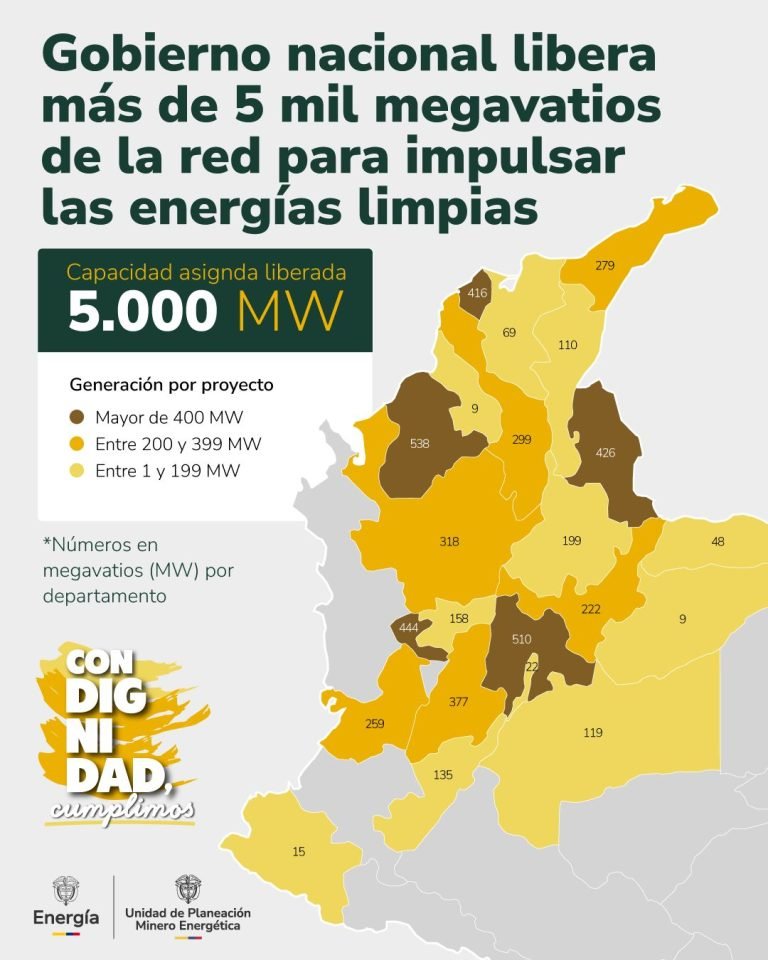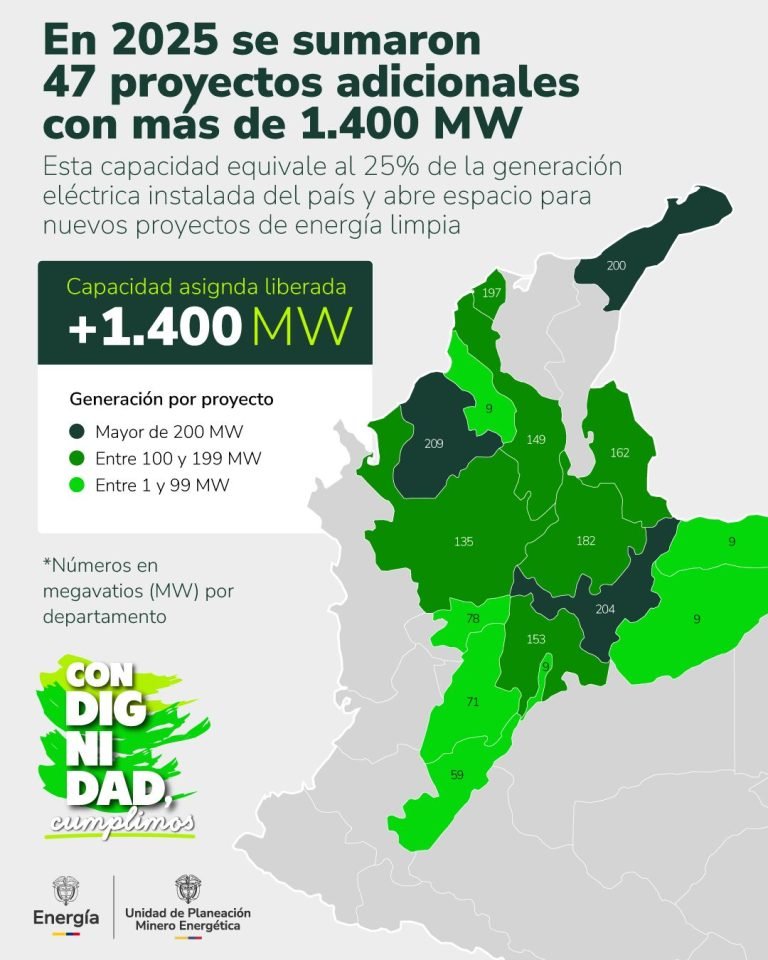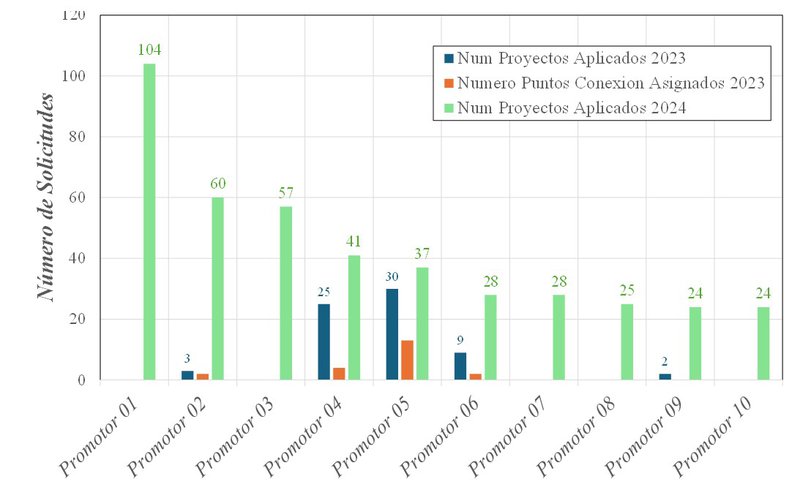Colombia frees up over 5000 MW of grid capacity for new renewable energy projects
November 17, 2025
Colombian energy planning agency UPME cleared 101 stalled grid-connection requests between 2022 and 2025, recovering 5,000 MW of transmission capacity—equivalent to 25% of the country’s installed power generation. The move opens space for new solar PV, wind power and clean energy projects.
The Government of Colombia has released 5,000 MW of transmission capacity in the National Interconnected System (SIN) over the past three years, the largest recovery of grid availability in the country’s history. The process, led by the Ministry of Mines and Energy and Colombia’s Mining and Energy Planning Unit (UPME), removed non-viable or inactive renewable energy projects that had blocked access to the grid.
UPME reported that by August 2024, it had cleared 54 grid-connection requests, representing 3,155 MW of potential generation capacity. An additional 47 projects—accounting for more than 1,400 MW—were removed in 2025 after a detailed technical review that assessed each project’s real progress and compliance with regulatory requirements.
In total, 101 projects were evaluated, enabling the recovery of around 5 GW, equivalent to 25% of Colombia’s installed power generation. According to the government, this milestone creates space for new renewable energy developments, improving grid integration, system reliability, and the country’s trajectory toward a Just Energy Transition.

The process was coordinated by UPME with support from XM (Colombia’s system operator), national transmission companies, and the Energy and Gas Regulatory Commission (CREG). The agencies identified projects that had regulatory approval but showed no measurable progress, allowing the system to reclaim unused capacity.
“By freeing this capacity, we eliminate bottlenecks and open room for new clean energy projects, contributing to a safer and more efficient grid,” said Manuel Peña Suárez, acting director of UPME.

The measure is part of the “Plan 6 GW+”, a strategy launched by the Ministry of Mines and Energy to modernise the transmission network, update technical studies, and release capacity tied up in dormant or speculative initiatives.
The ministry emphasised that the action does not affect active projects, but rather recovers space from proposals that had not advanced. The process improves transparency for investors, communities and companies, offering greater certainty in Colombia’s renewable energy market.
Energy Minister Edwin Palma highlighted that the investigation uncovered “unacceptable situations,” including projects with connection points assigned years ago that existed only as conceptual slides or “paper projects,” blocking the entry of viable solar, wind and energy storage initiatives. He also noted attempts by some companies to hoard connection capacity by submitting dozens—or even hundreds—of applications.
“Since it cost nothing to submit a project, companies created a carousel of speculative applications. This government made a firm decision to free up nearly five gigawatts of grid capacity so that real projects can move forward,” Palma stated.

Search
RECENT PRESS RELEASES
Related Post



